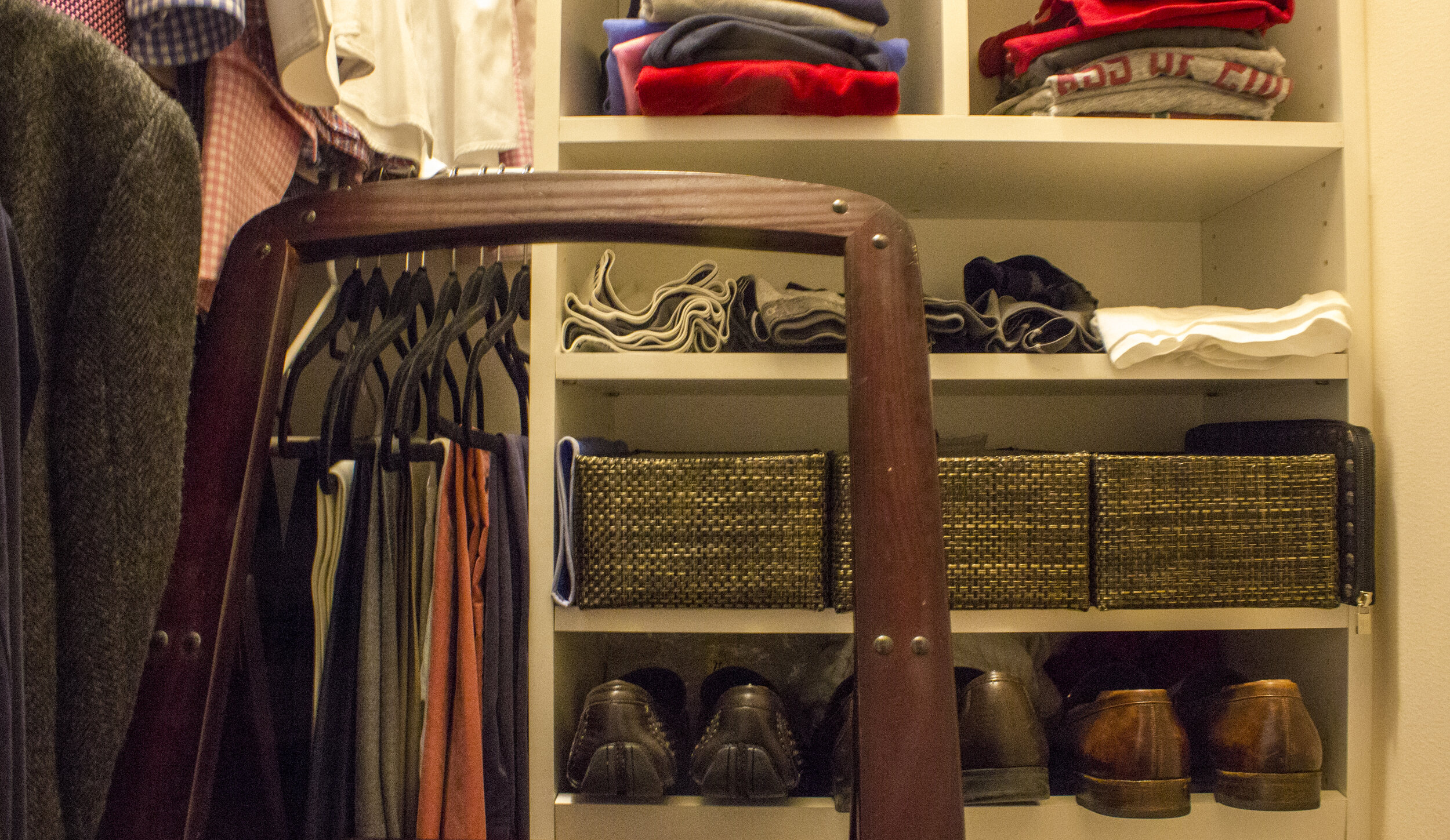How To Organize Shared Spaces
It’s much easier to get organized if you live alone. Why? You make all the decisions, and whether you realize it or not, you have all the answers. Everything is in your home because you brought it there. And you get to decide what to do with every single thing.
Organizing gets a lot more complex in shared spaces. Some things clearly belong to one person, and some things are clearly shared. But there’s a wide, wide gray area of things that were bought by one person… but used by another person… and important to yet another person.
And when it’s unclear who something belongs to, that creates a huge vacuum of responsibility in terms of categorizing, storing, and maintaining that thing. This is how we end up with cabinets and drawers full of things and we have no idea how they got there.
In multi-person households, I recommend two coordinating strategies for getting and staying organized.
1) Give each member of the household a room or area that is under their control - and only theirs.
Lack of control leads to apathy. We’re human beings: if we feel like we can’t have an impact on our surroundings, we give up and stop caring. However, if we are empowered with control over our own space and belongings, we have incentive to maintain them and keep them organized.
So give each person a designated space to store the things that are important to them. For kids, this might be an entire room - or if they share, a specific shelf, area of the closet, or side of the room. For adults, this might be a home office or bonus room of some kind if you have space, or something as simple as dividing the closet and giving each person a side.
2) Clearly delineate tidying and maintenance responsibilities for all shared spaces.
Our default for most routine things like running a household is to make assumptions. But when we assume, things fall through the cracks - or one person is unduly burdened with an unfair task load. This is how women end up doing the lion’s share of the work in heterosexual coupled households even if they work as many hours as their male partners - many of us operate on default assumptions based on childhoods where Mom took care of the house.
So sit down and talk about roles and responsibilities, beyond who does the laundry and who does the dishes. What’s the time frame for putting a game away in its box when you’re finished playing with it? What’s the policy for discarded socks and shoes around the house? Where do bags and mail go when we all walk in the door? Only by making tasks and responsibilities explicit will you ensure they get done.
Remember that responsibility and ownership are two sides of the same coin. When you own a space or an activity, you feel empowered - but you also have the responsibility for taking care of it!
Sharing spaces is particularly relevant now, when we may be trying to work and/or learn from home. For more specific advice on managing the distance learning and working from home scenario, check out a replay of my free webinar, How to Work and School From Home… Without Losing Your Mind!
And please feel free to get in touch if you ever have any questions about organizing for shared spaces!
LMW








I strongly believe that organizing is for men, too. And there are so many reasons for this that have absolutely nothing to do with a feminist agenda (although let’s be real, I definitely have one of those).